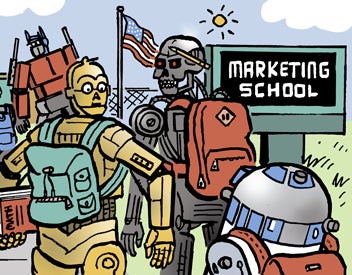Coupon distribution via free-standing insert was up 7.7% in 2004, according to TNS Media Intelligence, to 251 billion offers — the fastest growth rate the company has recorded in five years. Total FSI pages in North America also grew 7.7%, to 189.3 billion.
But the role of coupons in overall marketing may be slipping, according to PROMO’s 2005 Industry Trends Survey. Just 16.7% of brand marketers surveyed said that coupons and FSIs were among their top three spend allocations in 2004, down from 18.4% in 2003.
The top 20 manufacturers, led by Procter & Gamble and General Mills, accounted for about 60% of all coupons dropped. Strong activity among consumer packaged goods brands accounted for 135.3 billion FSI pages over the year (up 6.3% over prior year), or 71.4% of all FSI pages in the year. But it was franchise coupon pages (up 14.4% to 15.7 billion pages) and direct response (up 10.3% to 38.3 billion pages) that saw the stronger growth, up double-digit percentages each.
In 2004, for the first time, the average face value of an FSI topped the $1 mark, up 8 cents during the year to $1.03. Offers for personal care items had the highest average face value, at $1.49. Non-food rose 11 cents to an average of $1.26, fueled by a surge in coupons for healthcare and household products. Vitamin manufacturer Rexall Sundown, for example, increased its FSI distribution by 382% in 2004.
Non-food coupons grew 12% in distribution to 132.1 billion offers, or 53% of all CPG offers, up from about 50% in 2003. The number of healthcare offers increased by 27.1%, for example, and personal care offers were up 6.2%.
Food coupon value was up 2 cents to an average 78 cents. (The refrigerated food and cereal categories had the lowest average face value, of 65 cents and 86 cents, respectively.) Overall distribution for food coupons was up 3.4% in 2004, to 132.1 billion offers. This reversed flat/declining food coupon trends of the past few years.
Among franchise restaurants, Boston Market led in FSI distribution, at more than 1 billion pages. Fast-food sandwich maker Quiznos, however, showed the fastest growth, increasing offers by 811% to 762 million pages in 2004.
Coupon expiration timeframes continued to shrink last year, averaging 10.1 weeks from issuance to expiration (0.2% shorter period than in 2003). Healthcare coupons featured the most generous time allowances (average 11.5 weeks).
“The continued decline of expiration lengths may be a result of manufacturer’ focus on controlling financial risk, more emphasis on driving consumers to purchase now rather than later, or overall competitive trends among major manufacturers,” TNS speculated in a recent report.
Coupons continue to feel the marketing heft of retailers, as co-marketing programs grew by 11% over the year, to more than 4 billion pages. While not as strong growth in the programs posted in 2003 (when co-marketed FSI pages increased by 54%), both News America and Valassis pushed programs that drove consumers to specific stores for targeted brands. Co-marketing couponing is up nearly four times over 2000, when 1.1 billion pages featured such joint programs, according to TNS. SNAPSHOT 2004
Overall coupon distribution in North America up 7.7%, biggest increase in five years
Average FSI face value surpasses $1 ($1.03), driven by increase in offers for healthcare products
Co-marketed FSI pages increase by double-digits again (up 11% in 2004)





